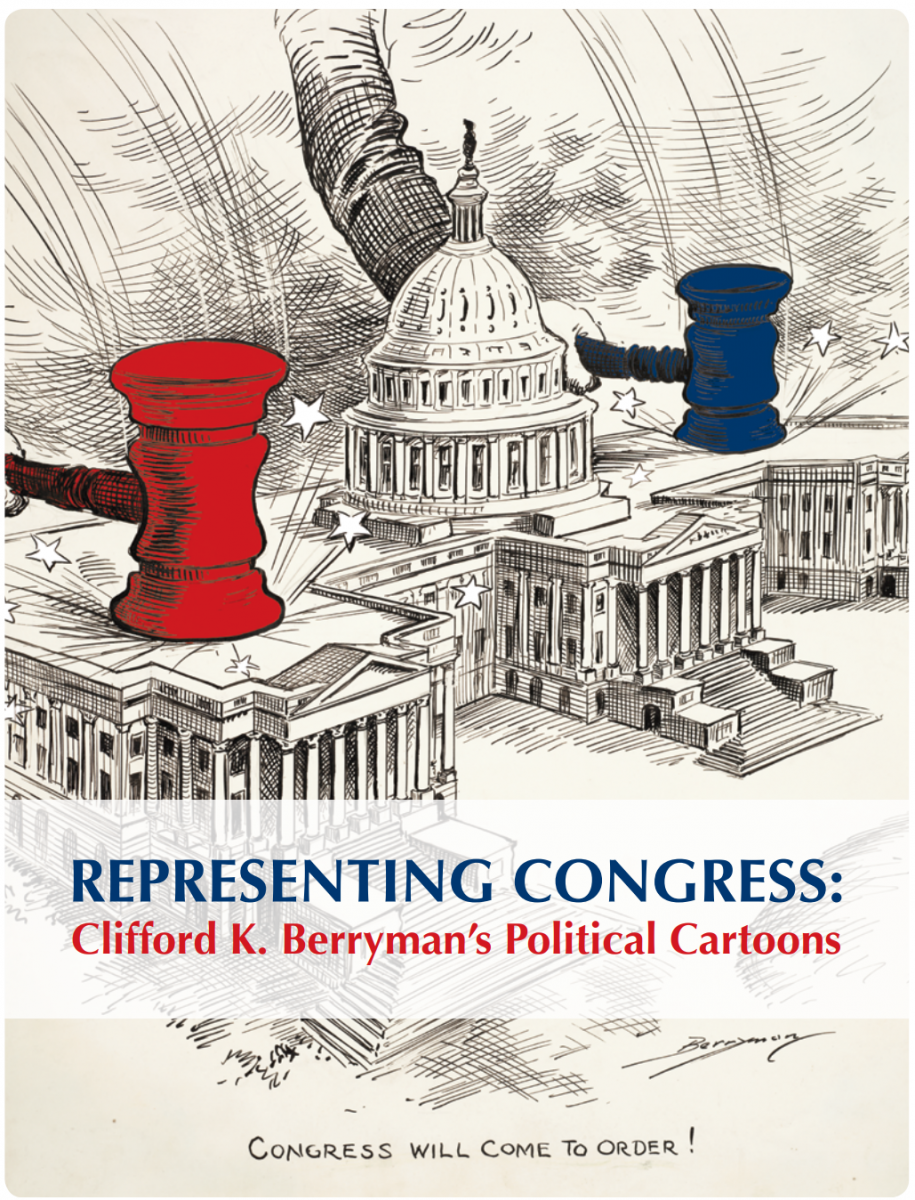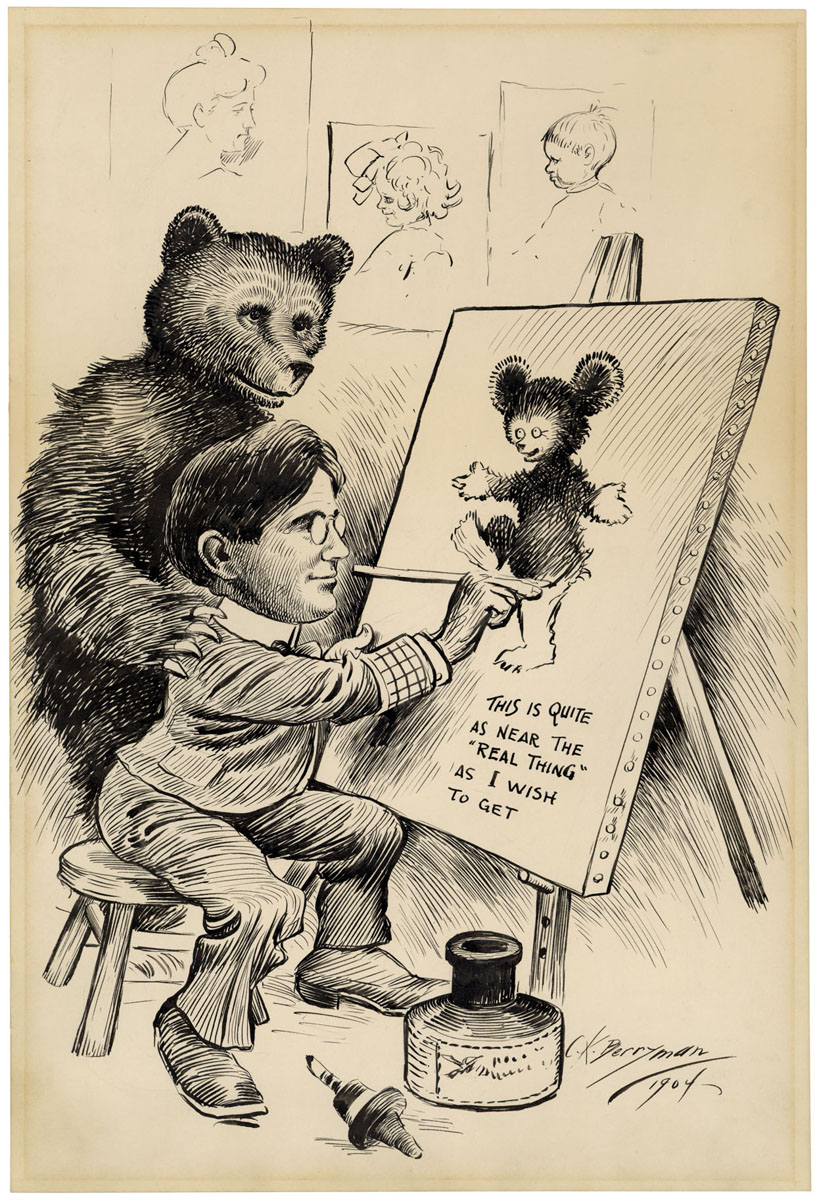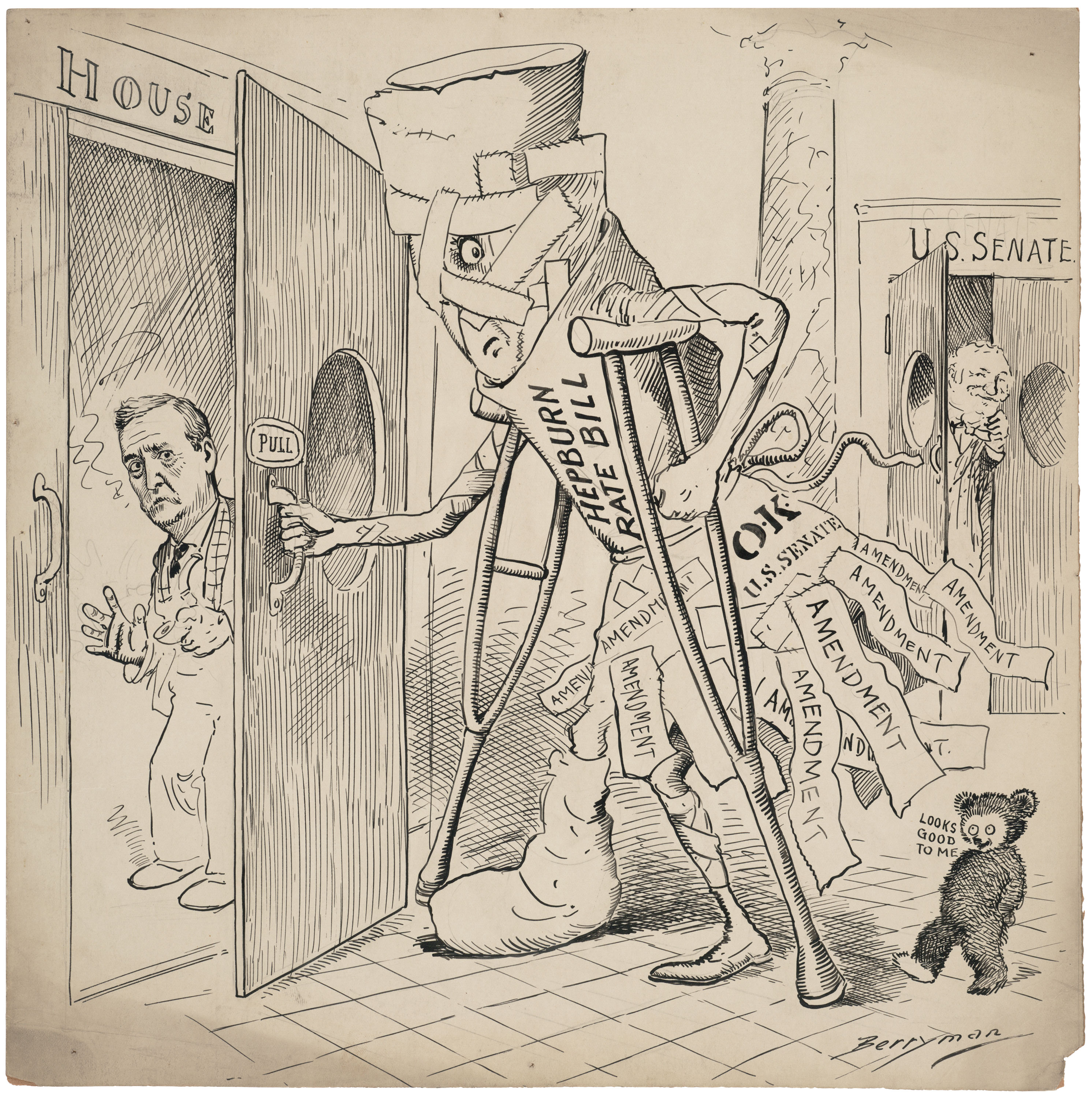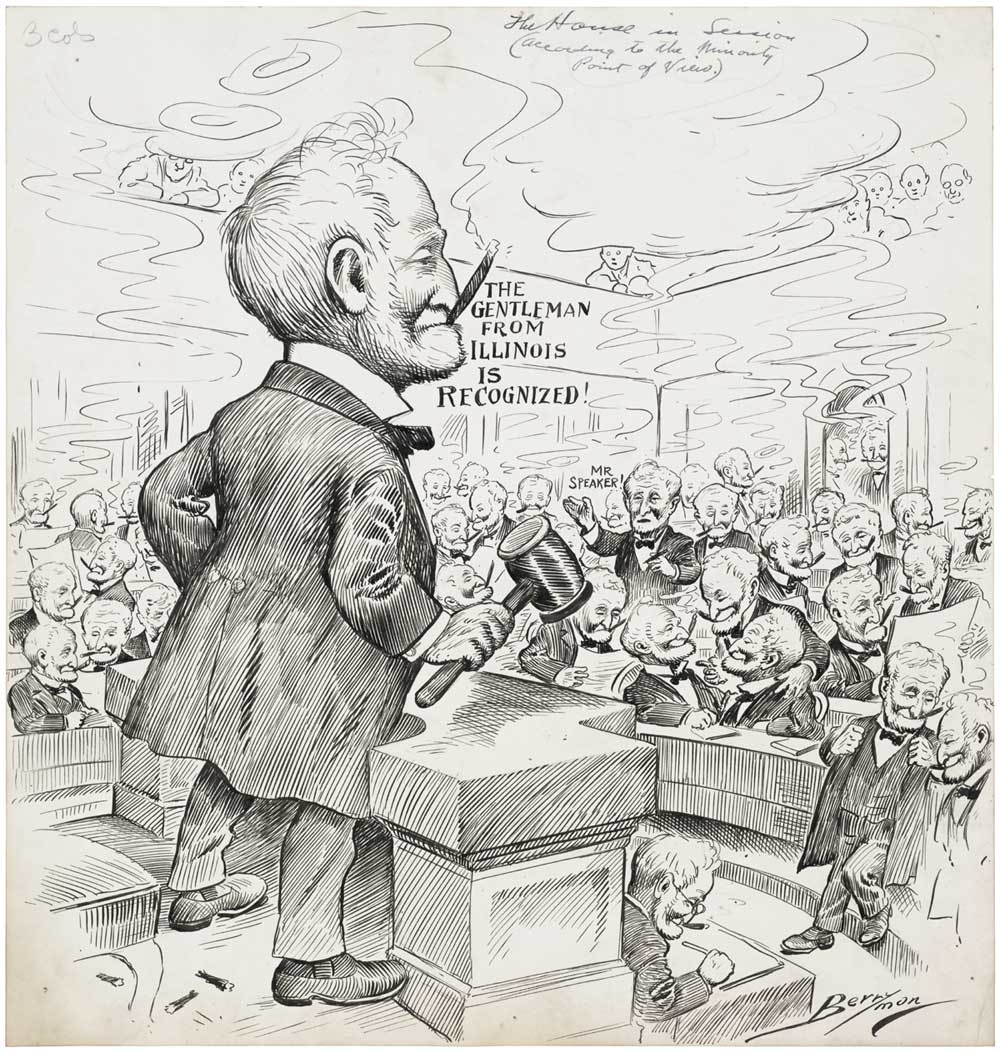
Clifford K. Berryman Political Cartoon Collection
A collection of 2,400 original pen-and-ink drawings by Clifford K. Berryman from the U.S. Senate Collection is housed at the Center for Legislative Archives. Berryman was Washington's best known and most-admired graphic commentator on politics in the first half of the 20th century. Berryman's career as a political cartoonist began in the late 1880s with the Washington Post and continued in 1907 with the Evening Star. Berryman's career for the Evening Star extended over forty years, until his death in 1949.
The cartoons comment on Washington politics, congressional issues, presidential elections, and both World Wars. The collection also includes approximately 230 cartoons by Jim Berryman, Clifford's son. This collection of Clifford and Jim Berryman cartoons are in the public domain.
All of Berryman's cartoons are available for online viewing through the National Archives Catalog.
The Center has created a variety of resources which feature the cartoons:
eBooks
A Visual History, 1940-1963: Political Cartoons by Clifford Berryman and Jim Berryman 
A Visual History, 1940–1963: Political Cartoons by Clifford Berryman and Jim Berryman presents 70 political cartoons that invite students to explore American history from the early years of World War II to the civil rights movement. These images, by father-and-son cartoonists Clifford Berryman and Jim Berryman, highlight many significant topics, including WWII and its impact, the Cold War, the space race, the nuclear arms race, and the struggle for school desegregation. This eBook presents the artists’ perspectives on the events, people, and institutions that shaped this tumultuous era of American history. Please note this is a draft and may be taken down or altered during editing.
Chapters include:
World War II: America Joins a Global Conflict, 1940-1945
World War II: Life in the U.S., 1941-1944
Postwar Issues: New Challenges at Home and Abroad, 1945-1948
The Cold War: An Era of Rising Tensions, 1948-1955
The Cold War: An Era of Standoffs, 1956-1963
Civil Rights: Confrontations over Equality, 1956-1963
Science and Technology Transform America, 1949-1963
Download A Visual History, 1940-1963: Political Cartoons by Clifford Berryman and Jim Berryman
America and the World: Foreign Affairs in Political Cartoons, 1898-1940
 America and the World presents 63 political cartoons by Clifford K. Berryman that invite students to discuss American foreign policy from the Spanish American War to the start of World War II. This eBook presents a selection of cartoons that show Berryman’s insight into the people, institutions, issues, and events that shaped an important era of American history.
America and the World presents 63 political cartoons by Clifford K. Berryman that invite students to discuss American foreign policy from the Spanish American War to the start of World War II. This eBook presents a selection of cartoons that show Berryman’s insight into the people, institutions, issues, and events that shaped an important era of American history.
Chapters include:
War with Spain and the Age of Imperialism 1898-1899
The Era of the Big Stick and Dollar Diplomacy 1900 – 1913
World War I Begins in Europe 1914 – 1916
America Enters World War I in 1917
America at War in Europe 1918
The Post-War Quest for Peace 1919 –1938
Storm Clouds Gathering: World War II on the Horizon 1939–1940
Download America and the World: Foreign Affairs in Political Cartoons, 1898-1940
Use the eBook in your classroom with our review activity, Studying U.S. Foreign Policy through Political Cartoons.
Representing Congress: Clifford K. Berryman's Political Cartoons
 Representing Congress is an eBook which presents a selection of political cartoons and learning resources to engage students in a discussion of what Congress is, how it works, and what it does.
Representing Congress is an eBook which presents a selection of political cartoons and learning resources to engage students in a discussion of what Congress is, how it works, and what it does.
Chapters include:
Congress and the Constitution: Articles I and II Illustrated
Congress: the Elected, Representative Branch of Government
Congress: Making Laws for the Nation
Congress and the President: Balancing Articles I and II
The Two-Party System in Congress
A Member's Job: Representing the People and the States
Download Representing Congress: Clifford K. Berryman's Political Cartoons
Use the eBook in your classroom with our lesson, Congress Represented in Political Cartoons.
Use the eBook in your classroom with our review activity, Big Civics Ideas through Political Cartoons.
Exhibits
Running for Office
The political cartoons in this exhibit illustrate the campaign process from the candidate’s decision to run for office to the ultimate outcome of the election. Although many political procedures have changed, these cartoons show that the political process has remained remarkably consistent; Berryman’s cartoons from the early 20th century remain relevant today.
Featured Documents
Hepburn Rate Bill, May 15, 1906
The cartoon "Hepburn Rate Bill," published on May 15, 1906 on the front page of the Washington Post, pokes fun at these Senate tactics. In reaction to the Senate's barrage of revisions, Berryman depicted the Hepburn Bill limping back to the House on crutches, hobbled and burdened by amendments. The bill also appears frightened - it knew the Constitution requires legislation to pass both houses of Congress in identical form before presentation to the President and that the House may not agree with the Senate's changes.
The House is in Session (According to the Minority View), April 16, 1908
Berryman's cartoons on Congress often featured Joseph Cannon. Joseph Cannon served in the U.S. House of Representatives as a Republican from Illinois for 23 terms over the course of nearly 50 years (1873-1890; 1893-1912; 1915-1922). He is best remembered for the four terms he served as Speaker of the House (1903-1911). First elected Speaker on November 9, 1903, Cannon is regarded as one of the most powerful Speakers in U.S. history.
Lesson Plans
Congress Represented in Political Cartoons
Students analyze political cartoons drawn between 1898 and 1948 to learn about Congress and its constitutional role in government.
Constitution Scavenger Hunt with Political Cartoons
Students analyze political cartoons to learn about the outline and structure of the Constitution, as well as the content of many of its clauses.
Reviewing Big Civics Ideas through Political Cartoons
Students analyze political cartoons drawn by Clifford K. Berryman between 1898 and 1948 to learn about the Constitution and constitutional institutions of government and politics.
Studying U.S. Foreign Policy through Political Cartoons, 1898 - 1940
Students analyze political cartoons drawn by Clifford K. Berryman between 1898 and 1948 to learn about topics and major events in U.S. foreign policy.


